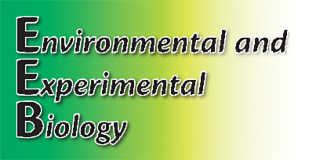
Hard copy: ISSN 1691–8088
On-line: ISSN 2255–9582
On-line: ISSN 2255–9582
| Faculty of Biology, University of Latvia | ||||||

|
Hard copy: ISSN 1691–8088
On-line: ISSN 2255–9582 |
|||||
| About the Journal | Retractions | Open Access | Author Guidlines | Current Issue | Archive | |
|
Environmental and Experimental Biology |
Environmental and Experimental Biology is an international print/electronic journal published four times a year, owned by a non-profit-making government-funded university. Original research papers covering all aspects of modern biology are welcome. The EEB publishes original articles, brief communications and reviews. Founded in 2003 as Acta Universitatis Latviensis ser. Biology, since 2010 EEB.
Publication is free of charge.
Khangrawat P., Srivastava S.
2025. Perfluorooctanoic acid-induced alterations in ultrastructure of cauda epididymal sperm and fertility consequences in Wistar albino rats.
Environmental and Experimental Biology 23: 53–61.
DOI: 10.22364/eeb.23.05
